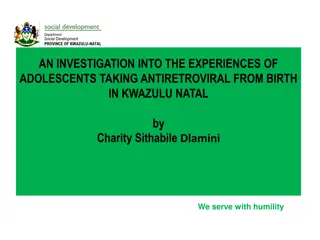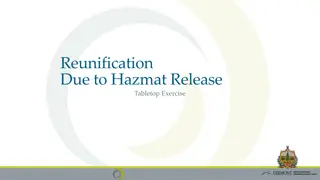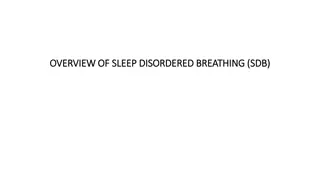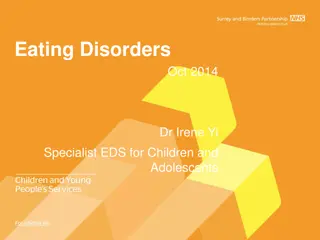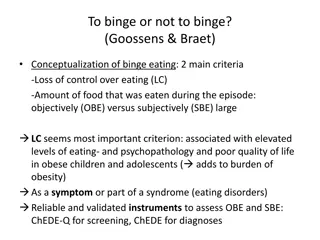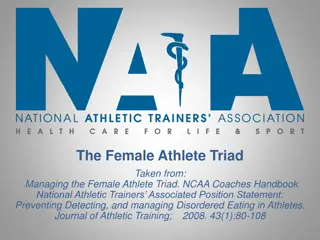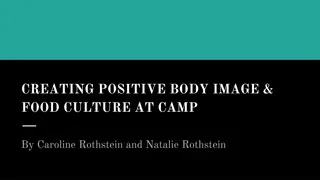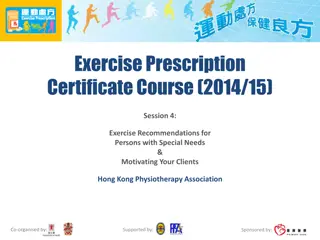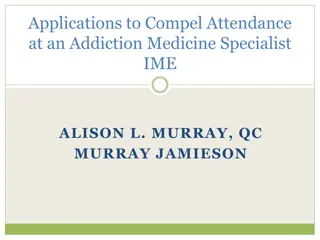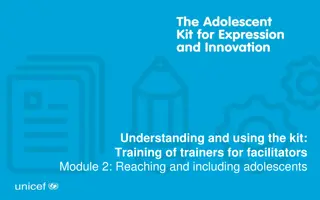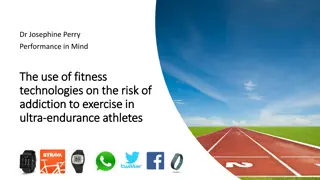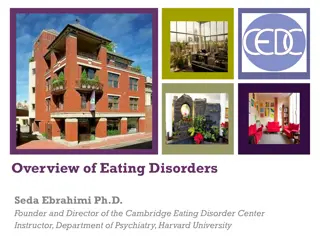EXERCISE ADDICTION AND DISORDERED EATING IN ADOLESCENTS
A study led by Dr. Mia Beck Lichtenstein introduces the Exercise Addiction Inventory for Youth (EAI-Y) to assess exercise addiction in adolescents, particularly those with disordered eating. The research aimed to validate the EAI-Y, estimate the prevalence of exercise addiction in active adolescents and eating disorder patients, and explore harmful exercise and eating attitudes. The study found a 21.2% prevalence of exercise addiction, with higher rates among eating disorder patients.
Download Presentation

Please find below an Image/Link to download the presentation.
The content on the website is provided AS IS for your information and personal use only. It may not be sold, licensed, or shared on other websites without obtaining consent from the author. Download presentation by click this link. If you encounter any issues during the download, it is possible that the publisher has removed the file from their server.
E N D
Presentation Transcript
EXERCISE ADDICTION AND DISORDERED EATING IN ADOLESCENTS DEVELOPMENT AND VALIDATION OF THE EXERCISE ADDICTION INVENTORY FOR YOUTH (EAI-Y) Mia Beck Lichtenstein Associate Professor, PhD, Cand. Psych. Universityof Southern Denmark Mental Health Services in the Region of Southern Denmark
BACKGROUND Exercise addiction is characterized by increasing exercise amounts, withdrawal symptoms and lack of control. The Exercise Addiction Inventory (EAI) is useful to identify exercise addiction symptoms in adults. A scale for adolescents does not yet exist despite increased risk of behavioral addictions.
THREE AIMS 1. To validate a youth version of the EAI (EAI Y) that can be used in future addiction research and clinical settings. 2. To estimate the prevalence of exercise addiction in physically active adolescents and patients with eating disorders. 3. To describe the association with harmful attitudes towards exercise and eating patterns.
METHOD A cross-sectional survey design: EAI-Y SCOFF EXTRA ITEMS Salience Conflicts Emotion regulation Tolerance Withdrawal Loss of control Make yourself Sick because you feel full. Lost Control over eating. Lost more than One stone. Feel Fat though thin. Food dominates life. Exercise despite pain and injury. Feeling guilty if no exercise. Eat less to regulate weight if no exercise. Sport performance reduced due to excessive exercise.
PARTICIPANTS N = 257 sport Mean years 15.8 years (SD=1.25) and range 12-20 years. Sport boarding schools N = 127 Mean years 17.6 years (SD=1.41) and range 14-20 years. Fitness center attendees Patients with eating disorders N = 87 Mean age 15.8 years (SD=2.3) and range 11-19 years.
THE EXERCISE ADDICTION INVENTORY FOR YOUTH (EAI-Y) Scores are rated from strongly disagree (1) to strongly agree (5) Exercise is the most important thing in my life. 1 2 3 4 5 I have conflicts with family or friends because I exercise so much. 1 2 3 4 5 I use exercise to change my mood (e.g. to feel happier or forget about problems). 1 2 3 4 5 Over the last year, I have increased the amount of daily exercise that I do. 1 2 3 4 5 If I don t exercise every day, I get restless, upset or sad. 1 2 3 4 5 I have tried to reduce the amount of exercise I do but end up exercising as much as I did before. 1 2 3 4 5 Total score 24-30 = risk of exercise addiction Good psychometric properties
PREVALENCE OF EXERCISE ADDICTION 21.2% Eating disorder patients 8.7% Fitness center attendees 4.0% Sport school adolescents
HIGH RISK OF EXERCISE ADDICTION Eat less to regulate weight 18% Reduced sport performance 62% Exercise despite pain and injury 64% Feeling fat 74% Feelings of guilt when not exercising 97% All results were significant compared to the non-addiction group and also after adjustment for eating disorder, age and gender.
CONCLUSION The EAI-Y is useful in clinical and research settings addressing exercise addiction in youth. Exercise addiction appears in physically active adolescents (4-8%) and eating disorder patients (21%). Exercise addiction is associated with feelings of guilt, body dissatisfaction, and exercise despite pain and injury.
THANKS FOR YOUR ATTENTION mlichtenstein@health.sdu.dk





